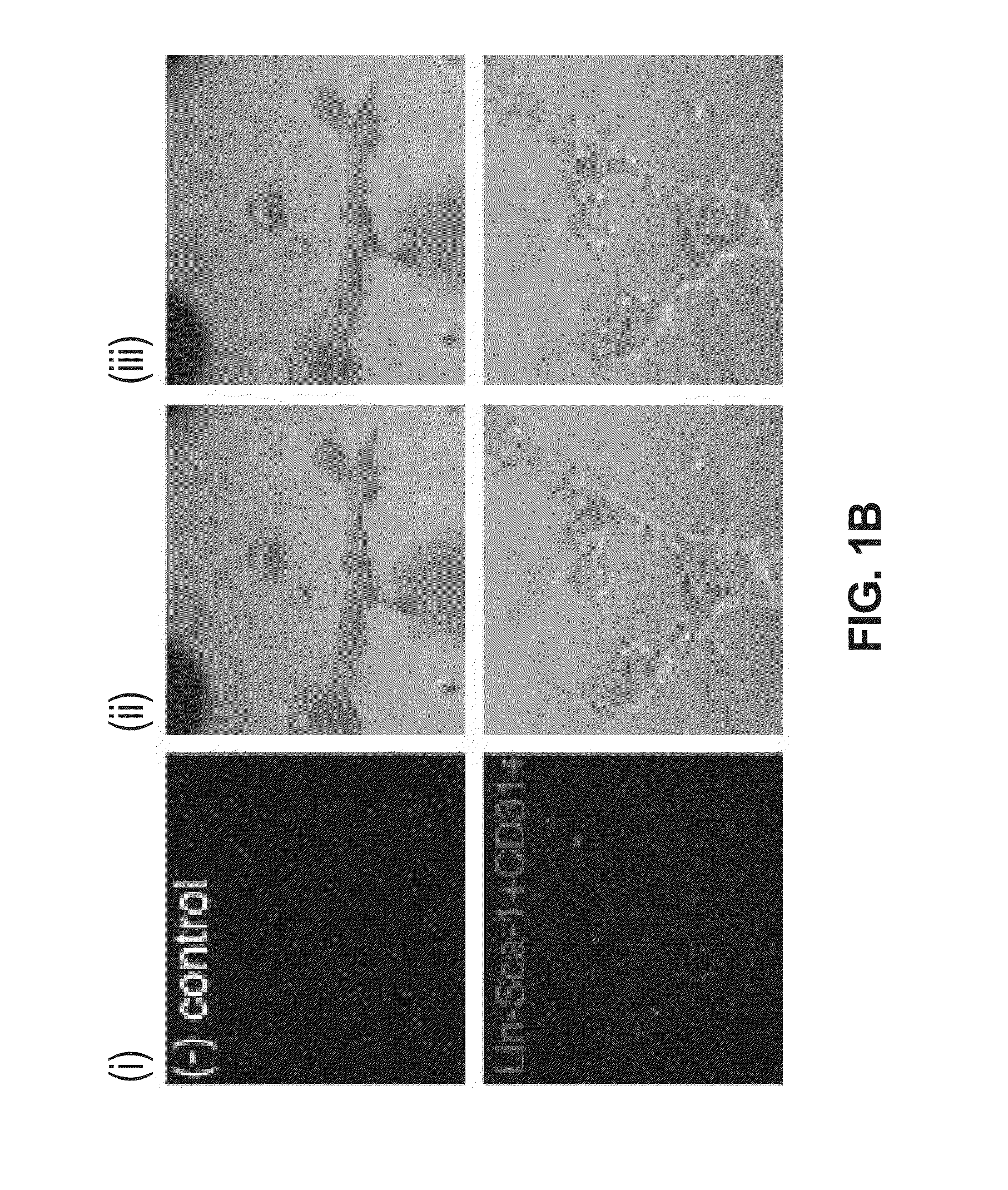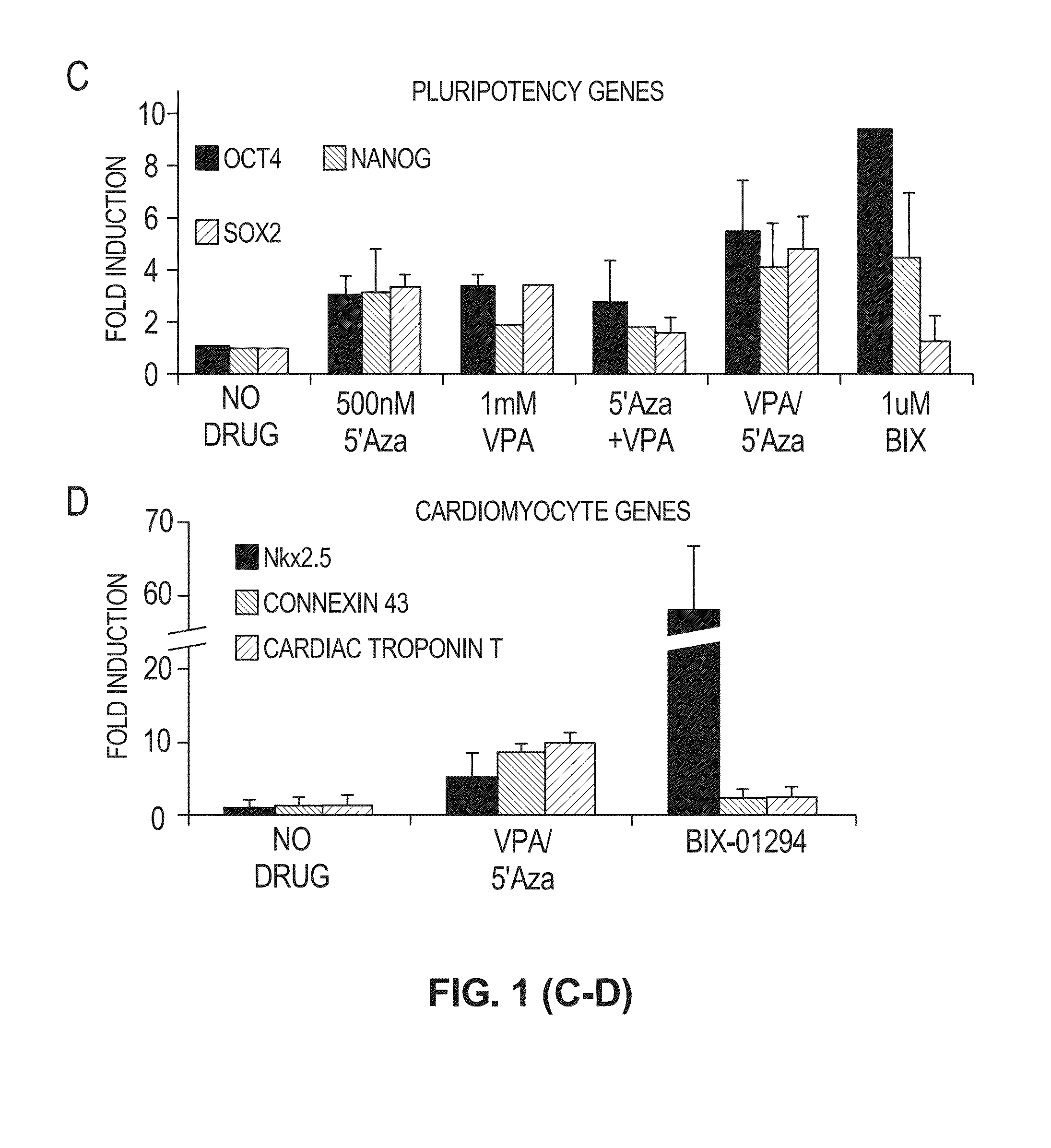CD34+ cells and methods of use
a technology of cd34+ cells and cells, applied in the field of cd34 +, can solve the problems of reducing functional competency and enhancing differentiation capacity, and none of the improved strategies have conferred enhanced differentiation capacity, so as to achieve the effect of increasing functional competency and reducing functional competency
- Summary
- Abstract
- Description
- Claims
- Application Information
AI Technical Summary
Benefits of technology
Problems solved by technology
Method used
Image
Examples
example 1
Animals, Materials and Methods
Mice
[0066]Eight-ten week old C57BL / 6J (stock number 000664). C57BL / 6-Tg eGFP (stock number 003291) or nude (stock number 00819) mice were purchased from Jackson Laboratory. All experiments conform to protocols approved by the Institutional Animal Care and Use Committee at Northwestern University (Chicago, Ill.) in compliance with all state and federal regulations governing the use of experimental animals.
FACS Sorting
[0067]Bone marrow extracted from the femurs, tibiae and hip-bones of 10-12 week old C57BL / 6J or eGFP transgenic mice were stained with labeled antibodies against Lineage (CD3e(145-2C11), CD11b(M1 / 70), B220(RA3-6B2), Ter119(Ly76), Ly6G / C(RB6-8C5)) Sca-1 (D7) and CD31 (MEC13.3) then sorted on a triple-laser Mo-Flo cell sorter (Cytomation).
[0068]Mice underwent surgery to ligate the left anterior descending coronary artery (Asahara H et al. J. Rheumatol. 24:430-435 (1997)) as reported previously (Krishnamurthy P et al., Circ...
example 2
Staggered Valproic Acid then 5′-Azacytidine Treatment Results in Genome Wide Enhanced Gene Expression in EPCs
[0080]Whole bone marrow was isolated from femurs, tibiae and hip bones of C57BL / 6 mice (Lo Celso C et al., J. Vis. Exp. 2007:157 (2007)). Bone marrow mononuclear cells were FACS sorted to greater than 95% purity for the population of cells characterized as Lineage (Lin: CD11b, Ly6G / C, B220, CD3e, Ter119) negative, Sca-1+CD31+, which represents approximately 1.4% of total mononuclear cells (FIG. 1A). This sorting strategy allowed for the isolation of progenitor cell types (Lin-Sca-1+) from the bone marrow with endothelial cell linage (CD31+) (Kim S W et al., J. Am. Coll. Cardiol. 56:593-607 (2010)). Lineage negative Sca-1+CD31+ cells, which will be referred to as EPCs henceforth, showed phenotypic characteristics consistent with their endothelial progenitor identity and incorporated into tubes formed by the mature murine endothelial cell line SVECs on Matrigel (BD Biosciences....
example 3
Chromatin Remodeling Drugs Effectively Remove Targeted Transcription Repressive Epigenetic Marks in Endothelial Cells
[0083]Valproic acid, 5′-Azacytidine and BIX-01294 can be used as effector molecules to remodel the chromatin to allow for less restricted gene expression and increased lineage differentiation potential. VPA and BIX-01294 are direct inhibitors of histone modifying enzymes (histone deacetylase and histone methyltransferase G9a, respectively). Therefore, murine endothelial cells (SVEC) were treated with either 1 μM BIX-01294 or staggered addition of 1 mM VPA then 500 nM 5′-Azacytidine for 48 h and histone acetylation and methylation were assessed by western blot. Acetylation of the lysine 9 position of histone 3 (H3K9, a transcription permissive epigenetic mark) was significantly higher in cells treated with VPA / 5′ Aza compared to control cells (FIGS. 4A, B). Additionally, a pan acetylated histone 4 antibody detected a greater than 2-fold increase in total H4 acetylation...
PUM
 Login to View More
Login to View More Abstract
Description
Claims
Application Information
 Login to View More
Login to View More - R&D
- Intellectual Property
- Life Sciences
- Materials
- Tech Scout
- Unparalleled Data Quality
- Higher Quality Content
- 60% Fewer Hallucinations
Browse by: Latest US Patents, China's latest patents, Technical Efficacy Thesaurus, Application Domain, Technology Topic, Popular Technical Reports.
© 2025 PatSnap. All rights reserved.Legal|Privacy policy|Modern Slavery Act Transparency Statement|Sitemap|About US| Contact US: help@patsnap.com



